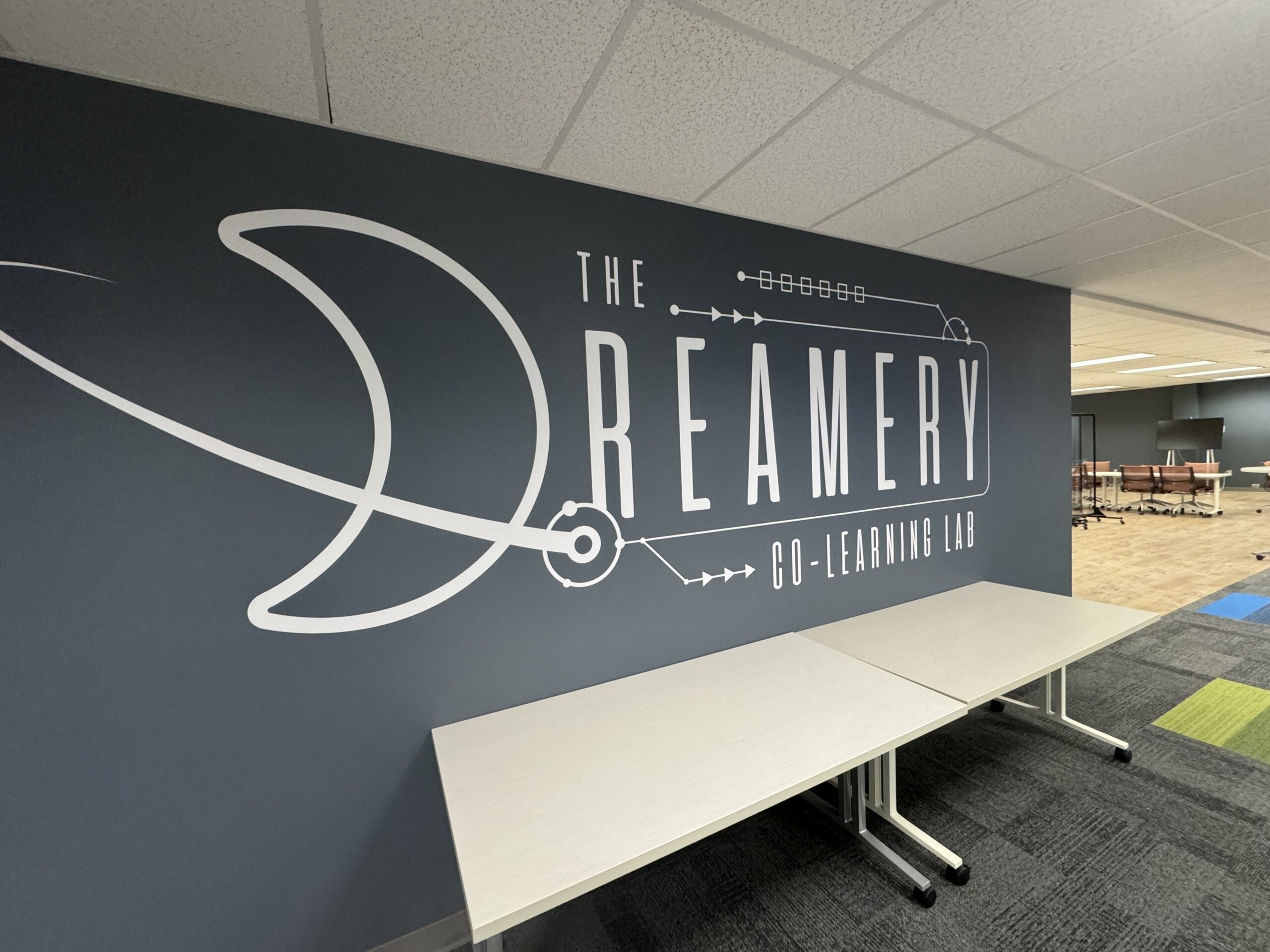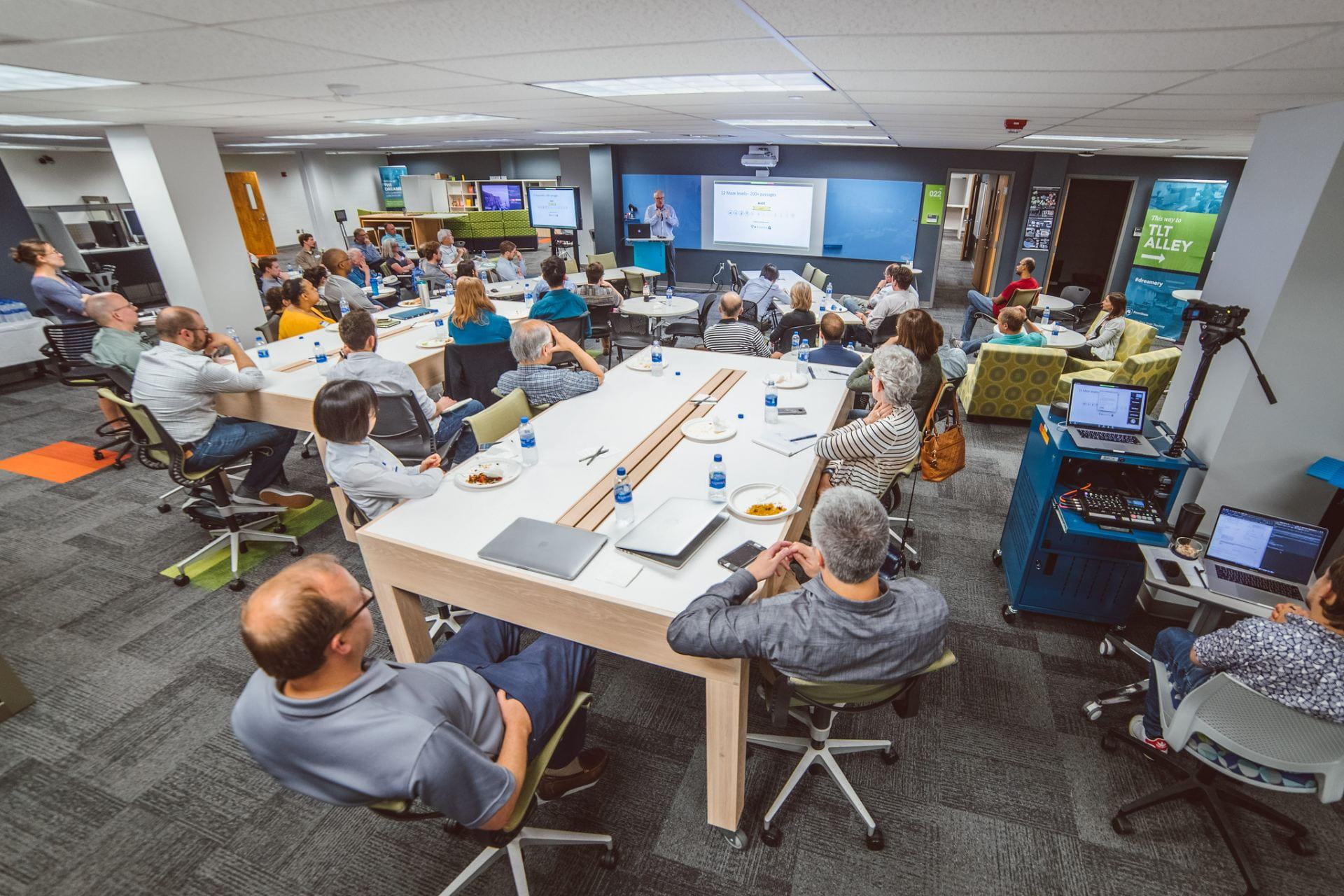Learning Spaces:
We are reimagining learning experiences one space at a time
Learning Spaces at Penn State are as diverse as our students, and different kinds of experiences require different kinds of spaces. With that in mind, we’re challenging age-old assumptions by reimagining learning spaces and asking lots of questions.
New spaces continually emerge as we keep exploring, experimenting, collecting feedback, and conducting research. From design strategy to immersive experiences to active learning to making, we are creating spaces built for experimentation, research, and enriched learning. The result is a growing portfolio of learning spaces that support and facilitate an array of learning experiences; each of which challenges our faculty and our students to teach, learn, and think in new ways.
The Dreamery, located on the ground level of Shields Building, opened in December 2016 and serves as the de facto headquarters of TLT’s mission. In this one space students, faculty, and staff can use multiple new and emerging technologies like augmented reality, virtual reality, rapid prototyping with simple robotics, artificial intelligence and more.
The Dreamery is also a versatile space where virtually every piece of furniture is mobile. Chairs, tables, whiteboards, and monitors can all be arranged in configurations that showcase how learning spaces can be more active and collaborative.
Specialized Learning Spaces

Media Commons
This initiative enriches the teaching and learning experience through multimedia technology, including video, audio, web, print and more and operates at all of Penn State’s locations.

Maker Commons
Another university-wide initiative that builds off the Media Commons model but focuses on 3D printing and rapid prototyping through robotics, paper craft, textiles, and more.

IMEX Lab
The Immersive Experiences (IMEX) Lab is designed specifically for 360° video, Virtual Reality (VR) and Augumented Reality (AR) viewing, experimentation and creation.
Experimental Classrooms

C-PAD Teaching Lab
Located in Borland 113, this is a flexible, technology-rich space where dynamic learning in arts and design happens and is researched.

Bluebox
An experimental research classroom in Althouse 101. TLT and faculty who teach in the Bluebox engage in iterative cycles of teaching, reflection, adjustment and more teaching.

Shared Experiences Lab
A space with furniture and technology that supports blended learning, video conferencing, active learning, and collaboration.

ASI 110
Examining how flexible writing surfaces and digital technology impact teaching and learning.
Across the Commonwealth
Active learning spaces encouraging student engagement and pedagogy are being implemented at Commonwealth Campuses throughout Pennsylvania.
The wide range of learning spaces across Penn State creates unique circumstances for implementing active learning strategies. To meet that challenge and support our faculty, we have developed a suite of active learning resources. These include a two-hour workshop on Active Learning Basics, instructional case studies, cohort-based Faculty Learning Communities and peer activities, and an Active Learning Institute.

What’s Next?
Start with a Concept, Identify the Need
Keeping pedagogical needs the focus of design is paramount whether the project entails renovating an existing space or building new. Throughout the design and build process, stakeholders are involved in the development and roll out of a new space. New materials, furniture, and classroom technology are sought out to meet the needs of those using the space.
Assistance for Commonwealth Campuses
Faculty that are located at one of the Commonwealth Campuses can reach out to Tim Linden of the Learning Spaces group for assistance in the request for funding. There is an annual request for proposals and allocation process established to help fund learning spaces across the state. Contact Tim to find out more about the process, discuss your space and how to apply.




